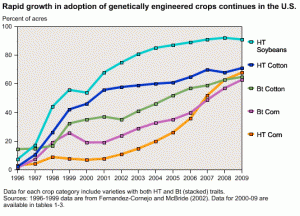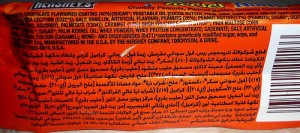HFCS makes rats fat?
I can hardly believe that Princeton sent out a press release yesterday announcing the results of this rat study. The press release says: “Rats with access to high-fructose corn syrup gained significantly more weight than those with access to table sugar, even when their overall caloric intake was the same.”
How they came to these conclusions is beyond me. Here’s the original paper.
It has long been known that feeding sugars to rats makes them eat more and gain weight. But, as summarized in Table 1 in the paper, the researchers did only two experiments that actually compared the effects of HFCS to sucrose on weight gain, and these gave inconsistent results. Their other experiments compared HFCS to chow alone.
The study is extremely complicated and confusingly described. As best as I can tell, here’s what they found:
1. The first study used 10 male rats in each group and observed them for 8 weeks. At the end of the study, the rats fed chow alone weighed 462 grams. The rats fed sucrose plus chow weighed 477±9 grams. The rats fed HFCS plus chow weighed 502±11 grams. The authors say the difference between 477 and 502 grams is statistically significant. But these rats were offered the sugars for 12 hours per day. The rats fed HFCS for 24 hours per day, which should be expected to be fatter, were not. They weighed less (470 grams) than the rats fed sucrose for 12 hours per day. So these results are inconsistent.
2. The second study did not compare rats eating HFCS to rats eating sucrose. It just looked at the effects of HFCS in groups of 8 male rats.
3. The third study used female rats (number not given) and observed them for 7 months. At the end of the study period, female rats fed HFCS plus chow for 12 hours a day weighed 323±9 grams. Female rats fed sucrose plus chow under the same conditions weighed 333±10 grams. This result is not statistically significant.
Although the authors say calorie intake was the same, they do not report calories consumed nor do they discuss how they determined that calorie intake was the same. This is an important oversight because measuring the caloric intake of lab rats is notoriously difficult to do (they are messy).
So, I’m skeptical. I don’t think the study produces convincing evidence of a difference between the effects of HFCS and sucrose on the body weight of rats. I’m afraid I have to agree with the Corn Refiners on this one.
So does HFCS make rats fat? Sure if you feed them too many calories altogether. Sucrose will do that too.
NOTE 3/26: see point-by-point response to this post by Bart Hoebel, one of the authors of the study, in the Comments below.
Addition, November 23: Thanks to Jeff Walker, professor of Biology at the University of Southern Maine, Portland, for doing a detailed critique of the study, most thoughtful and well worth a look.



